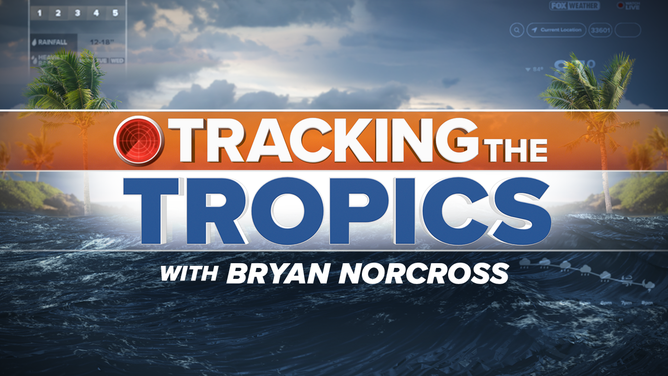Atlantic disturbance still could affect the islands while a new tropical depression forms
A small low-pressure system that started life as a dying cold front has found a patch of unusually supportive upper winds and warm ocean water to evolve into a tropical system and organize into a tropical depression.

The podcast Tracking the Tropics with Bryan Norcross is now available to stream.
(FOX Weather)
Updated at 9 a.m. Eastern: September begins with soon-to-be Tropical Storm Danielle organizing in the North Atlantic.
A small low-pressure system that started life as a dying cold front has found a patch of unusually supportive upper winds and warm ocean water to evolve into a tropical system and organize into a tropical depression. Thunderstorms finally wrapped partway around the center, so it met the criteria for the depression designation.
HOW TO WATCH FOX WEATHER ON TV

(FOX Weather)
Tropical Depression Five is trapped below a bubble of high pressure, so it’s shielded from the strong upper-level winds that normally rage across that part of the Atlantic, for now. It is expected to remain in an environment that’s conducive for development for the next few days. The National Hurricane Center is forecasting the system to become Tropical Storm Danielle soon, and eventually reach hurricane strength.
Next week, the system is forecast to finally scoot off toward northern Europe. It could eventually become a significant non-tropical storm for the British Isles. Soon-to-be Danielle is no threat to our side of the Atlantic.
Tropical Disturbance #1 has become a bit better developed, but it’s not quite a tropical depression. The National Hurricane Center is still giving is a high chance of becoming a depression in the next few days, however, as it drifts into the open ocean near the northeastern Caribbean islands and east of the Bahamas.
If it organizes and strengthens, it is more likely to stay well away from the islands. But if it remains weak, it may well track closer to the Virgin Islands, Puerto Rico, and the southern Bahamas. Stronger storms are steered by winds higher in the atmosphere, so the track and the intensity are linked.
In this situation, if it did come closer to the islands, the threat would just be more rainfall, since the system would not be well organized. It’s very unlikely to be a significant threat, but people in the islands should stay aware until we know if the system is going to organize, and the path becomes clear.
HOW TO DOWNLOAD THE FOX WEATHER APP
Tropical Disturbance #2 is a very disorganized area of low pressure near and over the Cabo Verde Islands off the coast of Africa. The system has a slight chance of organizing as it drifts into the Atlantic, but it’s expected to die out over the open ocean.
We’re just over a week away from the date in the hurricane season when we are most likely to have a named storm over the Atlantic, the Caribbean, or the Gulf of Mexico – September 10. But, looking at long-term averages, hurricane seasons are backloaded. More named storms and hurricanes form after that date than before, so it’s really not the "middle" of the season. That comes later in September.
From the historical records, we know that some seasons that didn’t crank up until September still became quite consequential. In 1961, for example, like this year, there were no named storms in August. But in September, giant Hurricane Carla slammed Texas, which they still talk about. And in October, Category 5 Hurricane Hattie decimated the capital of Belize.
The main point is, there is still a lot of hurricane season to go.
FOX Weather Hurricane Specialist Bryan Norcross has a podcast, Tracking the Tropics with Bryan Norcross, available now on FOX News Audio. You can get it on your device by clicking here.